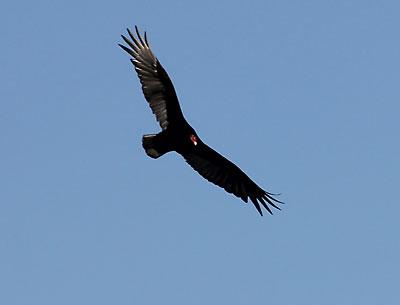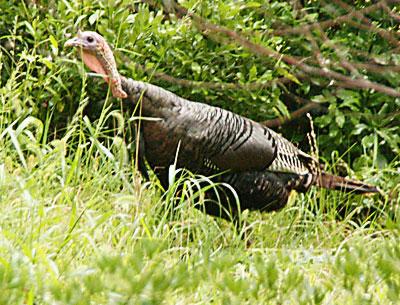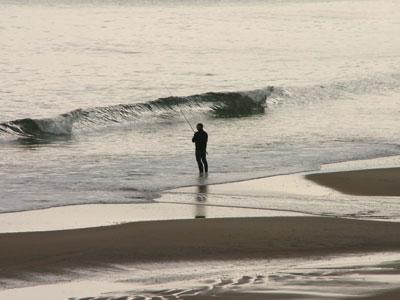A Torturous Waiting Game
A Torturous Waiting Game

Ready, get set. . . . It’s like surfers waiting for a forecast swell to arrive, or the first crack of the bat for those yearning to return to Mudville. Fishermen are with child for the arrival of fish, as is the case each spring, but this season’s cold temperatures seem to be drawing it, torturously, out.
First and foremost in the waiting game is the news that the State Department of Environmental Conservation has announced a better-than-expected fluke season due to open on Wednesday. The season will run until Sept. 29 with a four-fluke-per-day bag limit and a minimum size of 19 inches. The relatively generous quota came as a result of the D.E.C.’s being able to convince other coastal states that the underharvested part of their quota might better be donated to New York.
Small draggers have begun to work Montauk’s “backside” (ocean side) for their paltry 140-pound daily harvest, so the left-sided flatties have arrived from their offshore haunts.
The state has also announced the black sea bass season will run from July 10 to Dec. 31 with a 13-inch minimum size and an eight-fish daily bag. The sea bass quota is also better than expected news for recreational anglers. Porgy season will see an improvement as well with a 10-inch minimum size and a 30-fish bag limit. It will run from May 1 to Dec. 31 for all anglers. Party and charter boats will be able to offer their customers a 40-inch bag limit from Sept. 1 to Oct. 31.
Otherwise, flies are no doubt being tied, reels oiled and supplied with new line. Party and charter boat captains are planning their schedules, and in the case of the popular Lazy Bones head boat, the Bones’ brand-new deck is holystoned and ready to go.
Then, there’s Capt. Len Giarraputo, who lives in Amagansett but charters out of the Gone Fishing Marina in Montauk. Captain Giarraputo brings people offshore to catch fish and to swim with da fishes — the latter in a nice way. He runs a burial at sea service from his Odd-Lot II boat for families who would like the ashes of their loved ones spread upon the sea.
“I get a lot out of it,” he said. “People come out with a heavy heart, but are happy when it’s done. It’s a personal thing with me. I know how to do it, comfort people. I give them a certificate that shows the latitude and longitude, and I video the whole thing and download it to them if they want. It’s a good feeling for me.”
Captain Giarraputo said the waters off Montauk were ideal. “I go five miles off Montauk. If you look at the current pattern, it goes up and around Nova Scotia and comes back down. They travel around the world.” Captain Giarraputo can be reached at burialsatseamontaukny.com, or by calling 800-308-4586.
Montauk’s Viking Fleet of party boats has announced a rejuvenated striped bass fishing schedule due to begin early next month. The first change is an opportunity to join the fleet’s Moo Cow (as in big bass) Club’s loyalty program. Anglers who make five striped bass trips will get a sixth for free. Working on the big bass theme, Viking boats will venture out on Friday nights in search of Block Island behemoths. This will be an eight-hour trip to explore virgin grounds around the island named for Adriaen Block, the Dutch navigator who found and named the island in 1614. Imagine the size of the bass back then.
Sunday and Monday evenings will feature Sunset Striper Slam trips that leave at 5:30 p.m. and return at 10. The Triple S trips are designed for beginners and families and there will be a reduced rate for women and for children 16 and under.
Saturday nights will see a continuation of the fleet’s Flood Chaser trips. These trips are limited to 28 anglers on board the Viking Star. The fleet will also continue its limited Full Moon trips from 6 p.m. to midnight on Thursdays, Saturdays, and full-moon dates.
Speaking of getting ready, Mrs. Sam’s tackle shop on Three Mile Harbor Road in East Hampton will soon open its new, expanded, and improved shop with an expanded assortment of lures and all things fishy.
Harvey Bennett’s Tackle Shop in Amagansett has a sale on waders and clam rakes. Bennett announced that Napeague’s Beaman’s Creek was loaded with alewives. He said he heard tell of people pulling small striped bass from the sea at Georgica Beach and from the back of Three Mile Harbor using fly rods. He said he reckoned the gulls he witnessed diving off Promised Land earlier this week might have been reacting to the arrival of runner bluefish, the first to arrive, thin from their migration and ravenous.
“They get here the last part of April and the beginning of May.”





